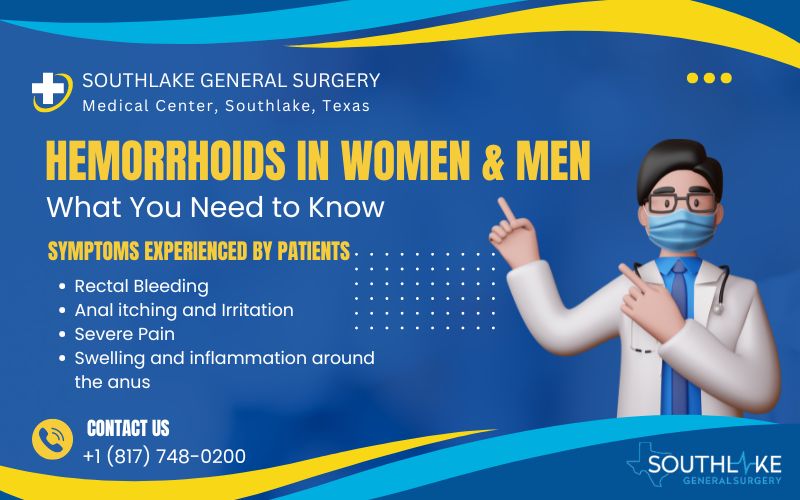Hemorrhoids in Women and Men can be a common and uncomfortable condition. Hemorrhoids, also known as piles, are a common medical condition that affects both men and women. Swelling and inflammation happen when the veins in the rectum and anus become enlarged.
Hemorrhoids can cause symptoms such as rectal bleeding, pain, and itching, and can significantly impact a person’s quality of life. While hemorrhoids can affect anyone, certain factors can increase the risk of developing them.
Chronic constipation, pregnancy, obesity, and a family history of hemorrhoids are some of the common risk factors. Hemorrhoids can be classified into internal and external hemorrhoids, depending on their location in the anus. Internal hemorrhoids are located inside the rectum and are usually painless, while external hemorrhoids are located under the skin around the anus and can cause discomfort and pain.
The good news is that hemorrhoids can often be managed and treated effectively. Home treatments such as sitz baths, witch hazel, and fiber supplements can help alleviate symptoms and promote healing. In more severe cases, surgical interventions may be necessary to remove or shrink the hemorrhoids. It’s also important to adopt preventive measures to reduce the risk of developing hemorrhoids, such as maintaining a healthy lifestyle, increasing fiber intake, and avoiding straining during bowel movements.
In this blog, we will explore hemorrhoids in detail, including their types, symptoms, causes, diagnosis, treatment options, and prevention strategies. We will also address frequently asked questions about hemorrhoids to provide a comprehensive understanding of this common condition. Whether you are experiencing hemorrhoids or looking to prevent their occurrence, this blog will provide you with the information you need to know.
Key Highlights
- Hemorrhoids are swollen veins in the rectum and anus, and they can cause symptoms like rectal bleeding, pain, and itching.
- Risk factors for developing hemorrhoids include chronic constipation, pregnancy, obesity, and a family history of hemorrhoids.
- Home treatments for hemorrhoids include sitz baths, witch hazel, and fiber supplements to soften the stool.
- Surgical interventions may be necessary for severe cases of hemorrhoids, and options include rubber band ligation, hemorrhoidectomy, and hemorrhoid stapling.
- Prevention strategies for hemorrhoids include lifestyle adjustments such as increasing fiber intake, staying hydrated, and avoiding straining during bowel movements.
Understanding Hemorrhoids: An Overview
Hemorrhoids are enlarged blood vessels in the rectum and anus that may result in discomfort and pain. They are like varicose veins and can be classified into internal and external hemorrhoids.
Internal hemorrhoids are located inside the rectum and are usually painless, while external hemorrhoids are located under the skin around the anus and can cause itching and pain. Hemorrhoids are a common condition, affecting both men and women.
Hemorrhoids can be triggered by different factors, such as chronic constipation, pregnancy, obesity, and a family history of the condition.
The Prevalence of Hemorrhoids in Women and Men
Hemorrhoids are a common condition that affects both women and men. Approximately 1 in every 20 people in the United States will experience hemorrhoids at some point in their lives. They are more prevalent in individuals over the age of 50, with over half of people in this age group being affected.
Hemorrhoids can occur in both the lower rectum and the anal area. They often cause symptoms such as rectal bleeding, itching, and discomfort.
Types and Symptoms of Hemorrhoids
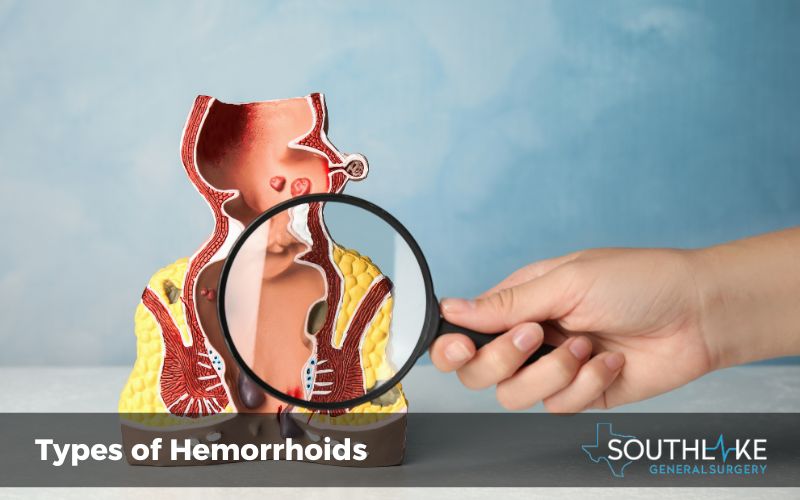
There are several types of hemorrhoids, including internal, external, prolapsed, and thrombosed.
- Internal hemorrhoids are situated within the rectum and typically do not cause pain.
- External hemorrhoids develop under the skin around the anus and can be itchy and painful.
- Prolapsed hemorrhoids occur when internal hemorrhoids protrude outside the anus.
- Thrombosed hemorrhoids occur when blood clots form within external hemorrhoids, causing severe pain.
Common symptoms of hemorrhoids include rectal bleeding, pain, itching, and swelling. It is essential to seek medical advice if you experience persistent or severe symptoms to rule out any other underlying conditions.
Classifying Different Hemorrhoid Types
Hemorrhoids can be classified into different types based on their location and characteristics.
- Internal hemorrhoids form within the rectum and typically do not cause pain. They are characterized by swollen blood vessels that may bleed during bowel movements.
- External hemorrhoids, conversely, develop beneath the skin surrounding the anus. These hemorrhoids can be itchy and painful, especially when irritated.
- Prolapsed hemorrhoids refer to internal hemorrhoids that have protruded outside the anus. They may require manual pushing to return them to their original position.
- Thrombosed hemorrhoids are hemorrhoids that are external and have developed blood clots.
These hemorrhoids can be extremely painful and may require medical intervention. Understanding the different types of hemorrhoids can help in identifying and managing symptoms effectively.
Common Symptoms Experienced by Patients
- Rectal bleeding, often noticeable on toilet paper, in the toilet bowl, or on the stool itself
- Anal itching and irritation
- Swelling and inflammation around the anus
- Discomfort and pain during bowel movements
- A sensation of fullness or a mass close to the rectum
- Severe pain, especially in the case of thrombosed hemorrhoids
The severity of these symptoms can fluctuate, appearing intermittently. It’s crucial to understand that these symptoms could also suggest other conditions, thus it’s vital to consult a doctor for an accurate diagnosis.
Causes and Risk Factors
The development of hemorrhoids is often attributed to increased pressure on the blood vessels in the anal area and rectum. Causes and risk factors commonly associated with hemorrhoids are:
- Experiencing difficulty during defecation, frequently caused by chronic constipation.
- Pregnancy, as the growing uterus puts pressure on the rectal veins
- Obesity can lead to added strain on the veins around the rectum.
- Intense physical exertion that may stress the rectal region
- Sitting or standing for long periods, which can impede blood flow to the rectal area
Understanding these causes and risk factors can help in preventing the development of hemorrhoids and managing existing ones effectively.
Key Causes Behind Hemorrhoid Development
Hemorrhoids develop when there is increased pressure on the blood vessels in the rectal area. There are several potential causes of this increased pressure.
One of the main causes is impaired blood flow to the rectum, which can result from standing or sitting for long periods. Another cause is the weakening of the connective tissue in the rectal area, which can occur with age or due to factors such as pregnancy.
Additionally, straining during bowel movements, often due to chronic constipation or diarrhea, can contribute to the development of hemorrhoids. It is essential to address these underlying causes to prevent the recurrence and progression of hemorrhoids.
Adopting healthy lifestyle habits, such as maintaining a high-fiber diet and staying hydrated, can help improve blood flow and reduce the risk of hemorrhoid development.
Risk Factors Specific to Women and Men
While hemorrhoids can occur in both women and men, certain risk factors are specific to each gender. In women, the hormonal changes and increased pressure on the rectal veins during pregnancy can increase the risk of developing hemorrhoids. Additionally, the physical strain of giving birth can also contribute to the development of hemorrhoids.
In men, heavy lifting and occupations that involve prolonged sitting or standing can increase the risk of hemorrhoid development. Individuals of both genders need to be aware of these risk factors and take preventive measures, such as maintaining a healthy lifestyle and practicing good bowel habits, to reduce the risk of hemorrhoids.
Diagnosis Techniques
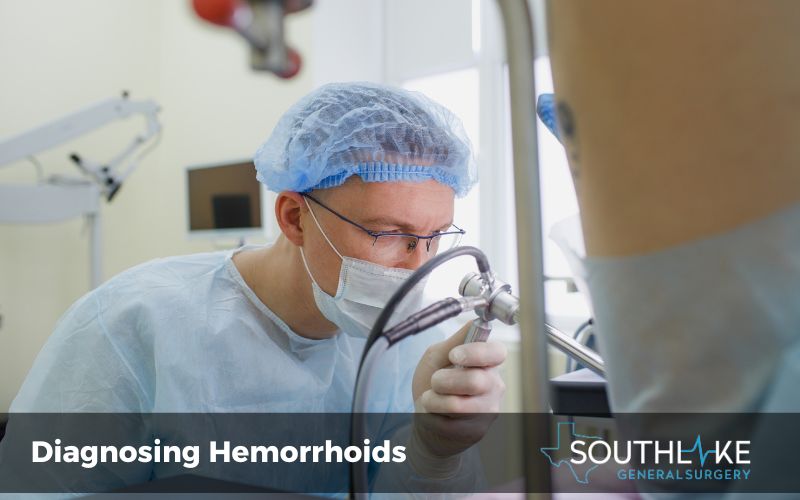
Diagnosing hemorrhoids typically involves a physical examination and a medical history review by a healthcare provider. Some common diagnostic techniques for hemorrhoids include:
- Digital rectal exam: A gloved finger is inserted into the anus to check for any abnormalities, such as swollen blood vessels.
- Flexible sigmoidoscopy: A flexible tube with a camera is inserted into the rectum to examine the lower part of the colon.
- Anoscopy: A hollow tube with a light source is inserted into the anus to visualize the internal hemorrhoids.
- Colonoscopy: A long, flexible tube with a camera is used to examine the entire colon for any abnormalities.
These diagnostic techniques help healthcare providers accurately diagnose hemorrhoids and rule out other potential causes of similar symptoms.
Professional Methods for Identifying Hemorrhoids
Healthcare providers have several methods for identifying hemorrhoids during a medical examination. These methods include:
- Digital rectal exam: A healthcare provider inserts a gloved, lubricated finger into the rectum to feel for any abnormalities, such as swollen blood vessels or protruding hemorrhoids.
- Flexible sigmoidoscopy: This procedure involves inserting a flexible tube with a camera into the rectum to examine the lower part of the colon. This allows the healthcare provider to visualize any internal hemorrhoids.
- Physical exam: A healthcare provider may visually examine the anal area for external hemorrhoids or any signs of inflammation or swelling.
These professional methods help healthcare providers accurately identify hemorrhoids and develop appropriate treatment plans based on the severity and location of the hemorrhoids.
What to Expect During a Diagnostic Exam
During a diagnostic exam for hemorrhoids, you can expect your healthcare provider to perform a thorough examination of your rectal area. This may include a rectal exam, which involves the insertion of a gloved, lubricated finger into the rectum to feel for any abnormalities or swollen blood vessels.
Your healthcare provider may also use a lighted tube called an anoscope or a flexible sigmoidoscope to visually inspect the inside of your rectum and anus. These procedures help your healthcare provider rule out other potential causes of symptoms, such as colorectal cancer, as well as confirm the presence of hemorrhoids.
It is important to communicate any concerns or discomfort you may have during the exam to ensure a thorough and accurate diagnosis.
Comprehensive Treatment Options
When it comes to treating hemorrhoids, multiple options are available, ranging from home remedies to surgical interventions. The severity of the hemorrhoids and the individual’s symptoms determine the treatment choice.
Home remedies and lifestyle changes, such as sitz baths, fiber supplements, and over-the-counter creams, can help alleviate mild symptoms.
Medical treatments, such as rubber band ligation and pain relievers, may be recommended for more severe cases. In some instances, surgical interventions, including hemorrhoidectomy and hemorrhoid stapling, may be necessary. A healthcare provider can assess the specific needs of each individual and recommend the appropriate treatment plan.
Home Remedies and Lifestyle Changes
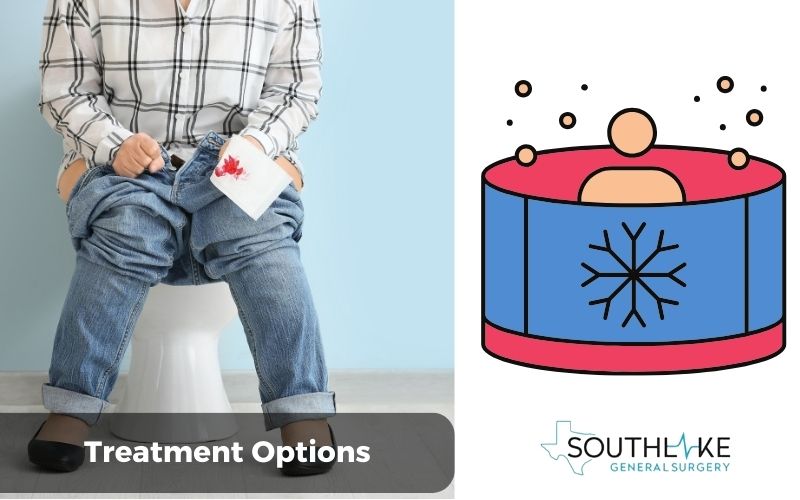
Home remedies and lifestyle changes can often help alleviate mild symptoms of hemorrhoids and promote healing. Some common home remedies include:
- Sitz bath: Soaking the affected area in warm water for 10 to 15 minutes several times a day can provide relief from itching and discomfort.
- Witch hazel: Applying witch hazel pads or ointment to the affected area can help reduce inflammation and relieve symptoms.
- Fiber supplements: Increasing fiber intake through supplements or dietary changes can help soften stools and reduce strain during bowel movements.
In addition to these remedies, practicing good bowel habits, such as avoiding excessive straining and maintaining regular bowel movements, can also help prevent hemorrhoids from worsening. It is important to consult with a healthcare provider before trying any home remedies or making significant lifestyle changes to ensure they are appropriate for your specific situation.
Medical Treatments Available for Hemorrhoids
In more severe cases of hemorrhoids, medical treatments may be recommended by a healthcare provider. Some common medical treatments for hemorrhoids include:
- Rubber band ligation: This procedure involves placing a small rubber band around the base of the hemorrhoid to cut off the blood supply, causing it to shrink and fall off.
- Pain relievers: Hemorrhoids can be made more bearable with the use of over-the-counter pain medications like ibuprofen or acetaminophen.
- Local anesthetic: In some cases, a healthcare provider may use a local anesthetic to numb the affected area and provide temporary relief from pain.
These medical treatments can be effective in reducing symptoms and promoting healing. However, it is important to consult with a healthcare provider to determine the most appropriate treatment option based on the severity and location of the hemorrhoids.
Surgical Interventions
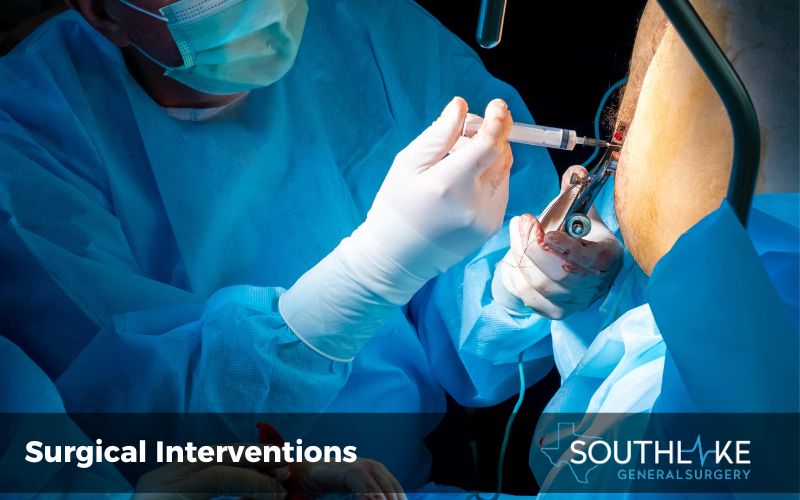
In certain cases, surgical interventions may be necessary to treat hemorrhoids that do not respond to other treatments or are causing severe symptoms. Some common surgical interventions for hemorrhoids include:
- Hemorrhoidectomy: This surgical procedure involves the removal of hemorrhoid tissue through incisions.
- Hemorrhoid stapling: Also known as stapled hemorrhoidopexy, this procedure involves using a special stapling device to remove excess tissue and reposition the remaining tissue back into the anus.
Surgical interventions are typically reserved for more advanced cases of hemorrhoids and require consultation with a healthcare provider to determine the appropriate course of action.
When Surgery Is Necessary
Surgery for hemorrhoids is usually reserved for cases that do not respond to other treatments or when symptoms are severe and affecting the quality of life. Surgical intervention may be required in some cases, such as:
- Severe and persistent pain that is not relieved by conservative treatments.
- The presence of a blood clot within an external hemorrhoid (thrombosed hemorrhoid).
- Prolapsed hemorrhoids that cannot be manually pushed back into the anus.
- When alternative methods of treatment have not been effective in alleviating symptoms.
Surgical interventions for hemorrhoids typically require general anesthesia and may involve the removal of hemorrhoid tissue or the repositioning of prolapsed tissue. It is important to discuss the potential risks and benefits of surgery with a healthcare provider to make an informed decision.
Types of Surgeries for Hemorrhoid Removal
There are various surgical options available for the removal of hemorrhoids, depending on the specific case and severity of symptoms. Some common types of surgeries for hemorrhoid removal include:
- Hemorrhoidectomy: This procedure involves the complete removal of internal or external hemorrhoids using surgical excision or stapling techniques.
- Hemorrhoidopexy: Also known as stapled hemorrhoidopexy, this procedure involves stapling the hemorrhoid tissue to the anal canal wall to reduce blood flow and shrink the hemorrhoids.
- Hemorrhoidal artery ligation: In this procedure, the blood supply to the hemorrhoids is cut off by tying off the arteries supplying them.
Each surgical option has its risks and benefits, and the choice of surgery depends on the individual’s specific case and the recommendation of a healthcare provider. It is important to discuss the potential side effects, recovery time, and expected outcomes with a healthcare provider before undergoing any surgical intervention.
Prevention Strategies

Preventing the development or recurrence of hemorrhoids involves adopting certain lifestyle adjustments and following preventive strategies. Some key prevention strategies include:
- Lifestyle changes: Maintaining a healthy weight, avoiding excessive straining during bowel movements, and incorporating regular physical activity into your routine can help prevent hemorrhoids.
- Dietary adjustments: Consuming a high-fiber diet, drinking plenty of water, and avoiding processed foods can help regulate bowel movements and prevent constipation, reducing the risk of hemorrhoids.
By following these preventive strategies, individuals can reduce the risk of developing hemorrhoids and improve overall digestive health. It is important to consult with a healthcare provider for personalized recommendations based on individual needs and risk factors.
Lifestyle Adjustments to Prevent Hemorrhoids
Making certain lifestyle adjustments can go a long way in preventing the development of hemorrhoids. Some key lifestyle changes that can help prevent hemorrhoids include:
- Maintaining a healthy weight: Excess weight and obesity can put added pressure on the rectal veins, increasing the risk of hemorrhoids. Maintaining a healthy weight through regular physical activity and a balanced diet can reduce this risk.
- Staying hydrated: Drinking plenty of water helps soften stools and prevent constipation, which can contribute to the development of hemorrhoids.
- Consuming a high-fiber diet: Including plenty of fruits, vegetables, and whole grains in your diet can promote regular bowel movements and reduce the risk of constipation.
By adopting these lifestyle changes, individuals can minimize the risk of hemorrhoids and maintain optimal digestive health. For specific advice and recommendations, it’s best to talk to a doctor.
Dietary Recommendations for Hemorrhoid Prevention
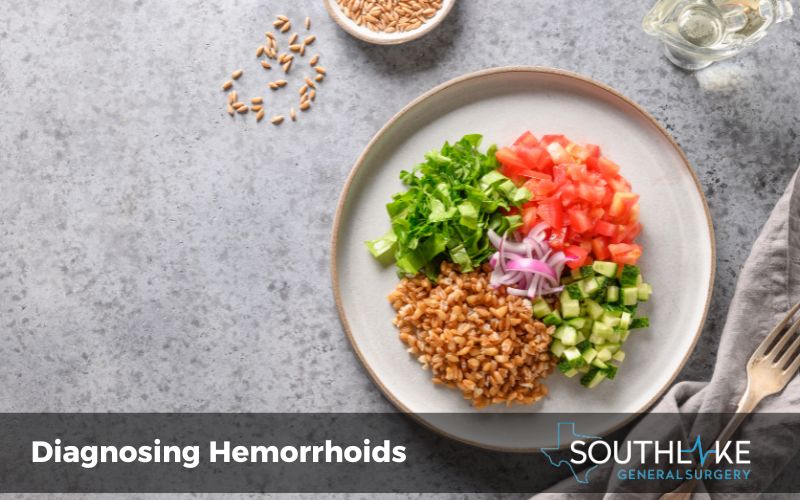
Diet plays a crucial role in preventing hemorrhoids. Some dietary recommendations for hemorrhoid prevention include:
- High-fiber diet: Consuming foods rich in fiber, such as fruits, vegetables, whole grains, and legumes, can help regulate bowel movements and prevent constipation, reducing the risk of hemorrhoids.
- Adequate fluid intake: Drinking plenty of water throughout the day helps soften stools and facilitates smooth bowel movements. Warm water can be particularly beneficial for promoting bowel regularity.
- Healthy bowel habits: Avoiding excessive straining during bowel movements and responding promptly to the urge to have a bowel movement can help prevent the development of hemorrhoids.
By following these dietary recommendations, individuals can maintain optimal digestive health and reduce the risk of hemorrhoid development. It is important to consult with a healthcare provider or a registered dietitian for personalized dietary guidance.
Living with Hemorrhoids
Living with hemorrhoids can be challenging, but there are strategies to manage the condition effectively. Some key tips for living with hemorrhoids include:
- Practice good hygiene: Use gentle, unscented wipes or damp toilet paper to clean the anal area after bowel movements. Avoid using harsh soaps or excessive wiping, as this can irritate the hemorrhoids.
- Use home remedies: Sitz baths, witch hazel pads, and over-the-counter creams can provide temporary relief from itching, pain, and swelling associated with hemorrhoids.
- Avoid prolonged sitting or standing: Taking breaks to move around and avoid prolonged periods of sitting or standing can help alleviate pressure on the rectal area and reduce the risk of hemorrhoid flare-ups.
It is important to consult with a healthcare provider for personalized advice on managing hemorrhoids and to discuss any persistent or severe symptoms.
Daily Life and Management Tips
Managing hemorrhoids in daily life involves adopting certain habits and implementing self-care measures. Some daily life and management tips for hemorrhoids include:
- Use gentle, unscented toilet paper: Harsh toilet paper can irritate hemorrhoids. Opt for gentle, unscented varieties to avoid aggravating your symptoms.
- Apply home remedies: Sitz baths, witch hazel pads, or over-the-counter creams can provide temporary relief from itching, pain, and swelling associated with hemorrhoids.
- Avoid prolonged periods of sitting or standing: Taking regular breaks to move around and avoid prolonged periods of sitting or standing can help alleviate pressure on the rectal area.
- Maintain good hygiene: Keeping the anal area clean and dry can help prevent further irritation and infection.
By incorporating these daily life and management tips into your routine, you can effectively manage hemorrhoids and minimize discomfort. However, if symptoms persist or worsen, it is important to consult with a healthcare provider for further evaluation and treatment options.
Long-Term Care and Monitoring
Long-term care and monitoring are essential for individuals with hemorrhoids. Some key aspects of long-term care for hemorrhoids include:
- Regular follow-up with a healthcare provider: Routine check-ups with a healthcare provider can help monitor the progress of hemorrhoids and ensure appropriate management.
- Managing symptoms: Continuously implementing home remedies, such as sitz baths and over-the-counter creams, can provide relief from symptoms such as anal itching and discomfort.
- Addressing underlying causes: Managing chronic constipation or other conditions that contribute to hemorrhoids can help prevent future flare-ups.
It is important to communicate any changes in symptoms or concerns to a healthcare provider for proper evaluation and guidance. Regular monitoring and appropriate management can help individuals live comfortably with hemorrhoids.
Conclusion
In conclusion, understanding hemorrhoids is crucial for both men and women. Being aware of the types, symptoms, causes, and treatment options can help in managing this condition effectively. From lifestyle changes to medical interventions, a comprehensive approach is necessary for dealing with hemorrhoids.
Prevention strategies and proper management play key roles in living well with hemorrhoids. If you have concerns or require further guidance, do not hesitate to make an appointment with a healthcare provider. Remember, early diagnosis and appropriate care are fundamental in addressing hemorrhoids successfully. Take charge of your health and reach out for professional assistance when needed.
Make an Appointment
If you are experiencing symptoms of hemorrhoids, such as rectal bleeding, pain, or discomfort, it is important to make an appointment with a healthcare provider at +1 (817) 748-0200. They can provide a proper diagnosis and recommend appropriate treatment options based on the severity and location of your hemorrhoids.
Additionally, if your symptoms persist or worsen despite home remedies and lifestyle changes, seeking medical advice is crucial. By consulting with a healthcare provider, you can receive the necessary guidance and support to manage your hemorrhoids effectively and improve your quality of life.
Frequently Asked Questions
What Are the Signs That You Should See a Doctor?
You should see a doctor if you experience severe pain, persistent rectal bleeding, the presence of a blood clot in the hemorrhoid (thrombosed hemorrhoid), or if your symptoms interfere with your daily life. A healthcare provider can evaluate your condition and provide appropriate treatment recommendations.
How Do Treatments Differ Between Women and Men?
While treatment options for hemorrhoids are generally similar for both women and men, some considerations may differ. For example, pregnant women may require certain adjustments to their treatment plan due to the potential impact on the developing fetus. Additionally, hormonal changes during pregnancy can affect the severity and management of hemorrhoids. It is important to consult with a healthcare provider for personalized treatment recommendations based on individual circumstances.
What not to do when you have hemorrhoids?
To manage hemorrhoids effectively, it is advised to avoid activities or behaviors that can exacerbate symptoms. This includes avoiding excessive straining during bowel movements, using harsh toilet paper, sitting for prolonged periods, scratching or rubbing the anal area vigorously, and engaging in heavy lifting. Implementing these precautions can help alleviate discomfort and promote healing.
What’s the difference between hemorrhoids and anal fissures?
Hemorrhoids and anal fissures are two distinct conditions that can cause similar symptoms. Hemorrhoids are swollen blood vessels in the rectal area, while anal fissures are small tears in the lining of the anus. Both can cause pain, bleeding, and discomfort during bowel movements. It is important to consult a healthcare provider for an accurate diagnosis and appropriate treatment options.
Medically Reviewed By: Dr. Valeria Simone MD
Board-certified General Surgeon at Southlake General Surgery, Texas, USA.
Follow us on Facebook and YouTube.
References:
- Fontem, Rodrigue F., and Daniel Eyvazzadeh. “Internal Hemorrhoid.” StatPearls – NCBI Bookshelf, 31 July 2023, www.ncbi.nlm.nih.gov/books/NBK537182.
- Lohsiriwat V. Hemorrhoids: from basic pathophysiology to clinical management. World J Gastroenterol. 2012;18(17):2009-2017. https://doi:10.3748/wjg.v18.i17.2009
- Lawrence, Aaron, and Emily R. McLaren. “External Hemorrhoid.” StatPearls – NCBI Bookshelf, 8 Aug. 2023, www.ncbi.nlm.nih.gov/books/NBK500009.
- Kibret AA, Oumer M, Moges AM. Prevalence and associated factors of hemorrhoids among adult patients visiting the surgical outpatient department in the University of Gondar Comprehensive Specialized Hospital, Northwest Ethiopia. PLoS One. 2021;16(4):e0249736. Published 2021 Apr 20. https://doi:10.1371/journal.pone.0249736
- Yang, Fang, et al. “Causal Associations Between Human Gut Microbiota and Hemorrhoidal Disease: A Two-sample Mendelian Randomization Study.” Medicine, vol. e37599, no. 13, 29 Mar. 2024, https://doi.org/10.1097/md.0000000000037599.
- “Sangrado Gastrointestinal En Español – NIDDK.” National Institute of Diabetes and Digestive and Kidney Diseases, www.niddk.nih.gov/health-information/informacion-de-la-salud/enfermedades-digestivas/sangrado-gastrointestinal.
- “Definition & Facts of Hemorrhoids.” National Institute of Diabetes and Digestive and Kidney Diseases, 23 July 2022, www.niddk.nih.gov/health-information/digestive-diseases/hemorrhoids/definition-facts.
- “Hemorrhoids – NIDDK.” National Institute of Diabetes and Digestive and Kidney Diseases, www.niddk.nih.gov/health-information/digestive-diseases/hemorrhoids.
- “Flexible Sigmoidoscopy.” National Institute of Diabetes and Digestive and Kidney Diseases, 5 Mar. 2024, www.niddk.nih.gov/health-information/diagnostic-tests/flexible-sigmoidoscopy.

